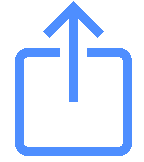Opening a bank account in Dubai feels easier when you know the rules, the documents banks expect, and the secure online steps that keep your identity and money protected from day one. Ever arrived at a branch and wondered which paper matters most. You are not alone in that moment. The process looks complex on the surface. It becomes predictable once you know the checkpoints. Banks here follow clear rules and timelines. Your job is to arrive prepared and answer with confidence. This guide walks you through each step with verified details. It also flags security changes that matter this year. You will see where digital onboarding helps and where a branch visit still appears.
Start with the right account type
Before you gather papers, decide which account fits your life. Residents usually open a current or savings account linked to an Emirates ID. Non-residents often start with a savings account and lighter features. Business owners follow a different path with trade documents and board resolutions. Conventional and Islamic options run in parallel across major banks. Each route leads to the same compliance checks. This choice affects the forms you sign and the evidence you prepare. The UAE government’s portal explains resident versus citizen basics and needed items. It remains a reliable first orientation for newcomers.
Know the documents banks really ask for
Banks ask for your passport and a valid UAE residence visa for resident accounts. They also ask for your Emirates ID or the Emirates ID application when onboarding begins. A salary certificate or an employer letter supports payroll accounts. Some banks request proof of address, such as a tenancy contract or a recent utility bill. Non-residents typically add overseas proof of address and recent bank statements. The official portal lists core proofs for citizens and residents in simple terms. Bank help pages then add practical details for specific products. Use the government list to start and the bank list to finish. That pairing keeps surprises away at the counter.
Go digital with UAE Pass when possible
You can verify your identity online with UAE Pass. Many banks integrate UAE Pass for quick digital onboarding and form prefilling. This reduces typing errors and speeds up verification steps. You still provide the same documents, but you share them securely. Some cases still route you to a branch to finalize signatures. Check your bank’s app for the UAE Pass login during signup. Emirates NBD announced UAE Pass integration for online account opening. UAE Pass itself explains its role as the national digital identity. Industry guides also describe how UAE Pass underpins instant KYC flows. These sources explain why app-based onboarding now feels normal in Dubai.
Expect clear KYC and AML questions
Every bank must understand who you are and why you need the account. They ask about your work, expected transfers, and source of funds. They screen names against sanctions and check unusual activity flags. This is standard compliance and not a personal doubt. Regulations require customer due diligence for all customers. The central bank rulebook explains CDD duties in plain language. It also highlights when enhanced checks apply for higher risk. The AML section outlines transaction monitoring and reporting duties. If a banker asks follow-ups, they are checking regulatory boxes. Answer steadily and keep copies ready for quick review.
Proof of address that passes compliance
Address proof can feel confusing on day one. A recent utility bill or tenancy certificate usually works for residents. In Dubai, Ejari records help confirm your tenancy status. Some banks also accept an employer letter that states accommodation details. During digital onboarding, UAE Pass may share verified documents. Banks still reserve the right to ask for a physical copy at collection. Non-residents rely on overseas bank statements and address proofs from home. Bank pages and local explainers confirm these practical patterns. If your first document fails, offer the next best official record. This keeps your application moving without friction.
Salary transfer or a regular current account
If your employer pays through the UAE payroll systems, a salary account helps. The bank may ask for a salary certificate or an employer letter. This ties your IBAN to payroll and simplifies recurring transfers. A regular current account works if you prefer flexibility. The document set stays similar for both paths. The government portal lists the baseline again for residents. Your choice affects card issuance and daily limits more than anything. When in doubt, start with a simple account and upgrade later. The bank can switch types once your pattern stabilizes.
Non-resident pathways without a UAE visa
You can open a non-resident account under defined conditions. Banks often offer savings accounts with view-only online banking at first. Expect to provide a passport, an entry stamp, and overseas address proofs. Recent bank statements from your home bank support risk checks. Some banks prefer a branch visit to complete verification. The available features expand after you obtain residency and Emirates ID. Mashreq, for example, publishes a non-resident option and documentation notes. Use that as a model for what other banks ask. Prepare clean scans and originals to avoid a second visit.
Business banking for startups and SMEs
Company accounts follow a structured checklist. You bring the trade licence, memorandum documents, and shareholder IDs. Banks also ask for a board resolution and ultimate beneficial owner details. A lease or flexi-desk proof shows local presence for many free zones. Relationship managers ask about your flows and counterparties. The central bank rulebook page on account opening outlines expectations. Specialist guides explain why timelines vary by industry risk. Free zone firms usually complete faster than complex cross-border structures. Keep your activity codes consistent across all documents. That consistency reduces extra compliance interviews.
Islamic banking paths for Sharia compliance
If you prefer Sharia-compliant banking, Dubai offers mature choices. Fully Islamic banks operate alongside Islamic windows at conventional banks. Account opening steps mirror conventional paths with Sharia-based products. You still pass the same identity and compliance checks. Profit structures replace interest in account terms. The central bank lists fully Islamic banks on its site. That list helps you map choices before you visit. Pick a bank that aligns with your daily needs. Digital apps for Islamic banks now mirror top conventional apps. You will find onboarding steps very similar.
Security first while you apply
Log in only through official apps and verified domains. Never share one-time codes with anyone who calls or messages you. The UAE is moving away from SMS and email codes toward in-app approvals. Industry coverage reports a full phase-out of OTP by March 2026. Banks already push biometric and app-based confirmations for safety. If you face any suspicious contact, report it through e-crime channels. Dubai Police offers a 24/7 digital reporting path for cyber fraud. Keep your ID and card details out of public Wi-Fi screens. Approve requests only inside your banking app or UAE Pass. That habit alone blocks many social engineering attempts.
Understand IBANs and when yours arrives
After approval, your account receives a UAE IBAN. Every UAE IBAN contains twenty-three characters by regulation. The format starts with AE, then check digits, then bank and account numbers. Banks issue the IBAN once your profile passes compliance checks. You can view it in your app or on the welcome letter. Share your IBAN carefully with employers and payers. Always double-check the characters before sending. The central bank explains the official IBAN format on its site. That page helps you spot typos before transfers fail. Use it as a permanent reference for future payments.
Recommendations from the editor of www.few.ae
According to information compiled by www.few.ae editor, keep a single digital folder for onboarding. Place your passport, visa page, Emirates ID, and tenancy proof together. Add your salary certificate and an employer letter with contact details. Keep recent bank statements ready if you are new or non-resident. Save clean scans and bring originals to the branch. Use UAE Pass to reduce manual typing and errors during signup. Enable biometric login on your banking app at the first login. Decline any request to share codes over the phone or chat. Review notifications for new authentication prompts this year. These habits shorten the process and strengthen security at every step.
A realistic timeline and what slows it down
Digital onboarding sometimes finishes within the same day for simple profiles. Branch onboarding usually takes a few business days after submission. Business accounts can take longer due to extra checks on activities. Mismatched addresses or unclear employment letters cause delays. Unreadable scans also slow due diligence teams. Keep your activity description consistent on every document. If compliance requests an extra proof, respond the same day. Many banks now use UAE Pass to shorten manual checks. That improves speed without skipping rules. Expect a smooth experience when your paperwork tells one clear story.
Quick checklist you can memorize without notes
Think in threes for a calm branch visit. Identity documents include your passport, visa, and Emirates ID. Employment proofs include a salary certificate and an employer letter. Address proofs include a tenancy certificate or a recent utility bill. Non-residents add overseas proofs and recent statements. Keep printed copies and PDFs on your phone. Use bank apps with UAE Pass for clean data transfer. Watch for in-app approvals instead of SMS codes this year. Report suspicious messages before replying to anyone. Walk out with your IBAN once the bank confirms your profile.
Final note for movers
This guide avoids prices on purpose. Salaries and rents change by district and season. If you must reference them for payroll letters, treat them as approximate. Banks evaluate affordability with context, not a single figure. A tidy document set still does the heavy lifting at the counter.


 then "Add to Home Screen"
then "Add to Home Screen"